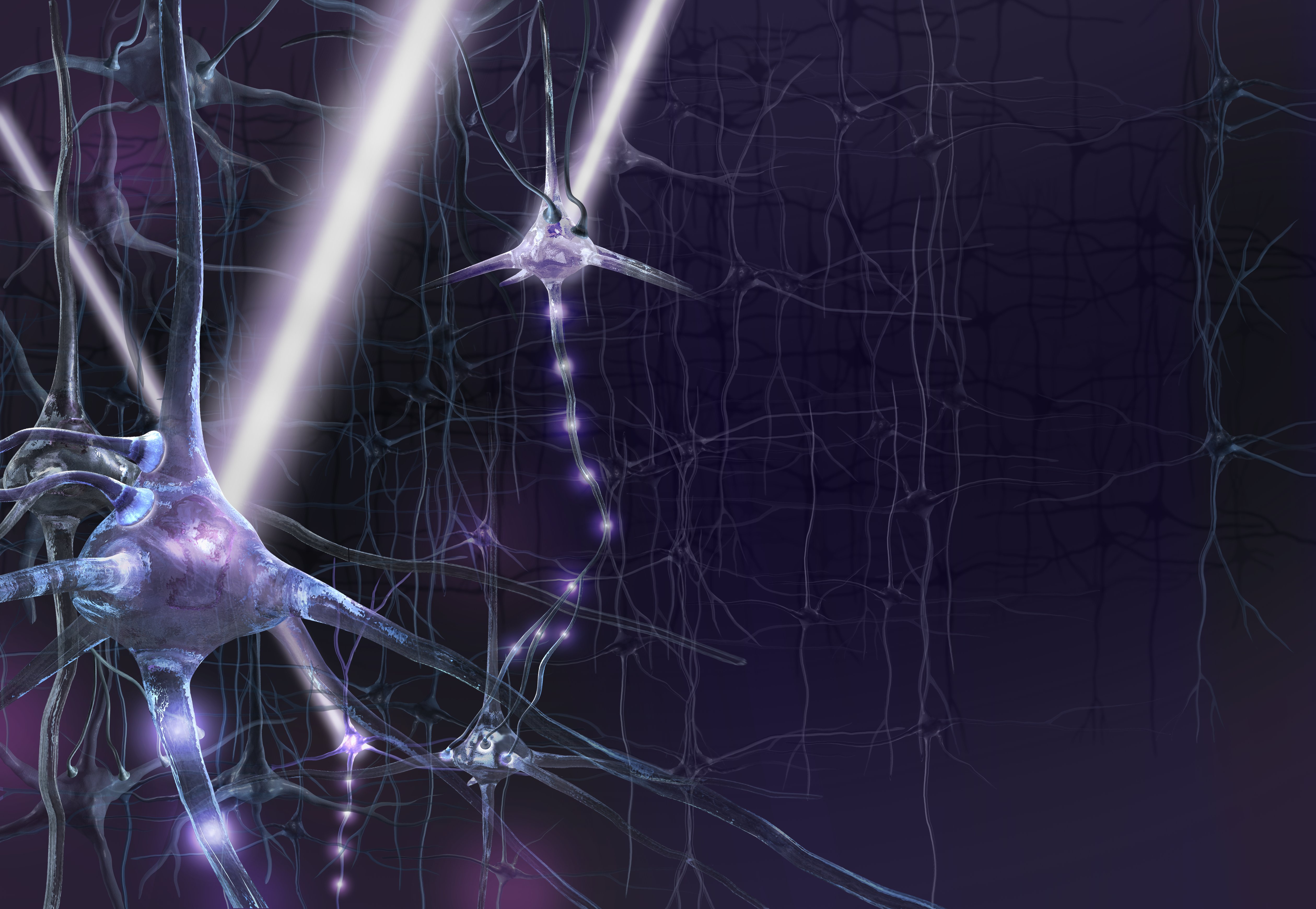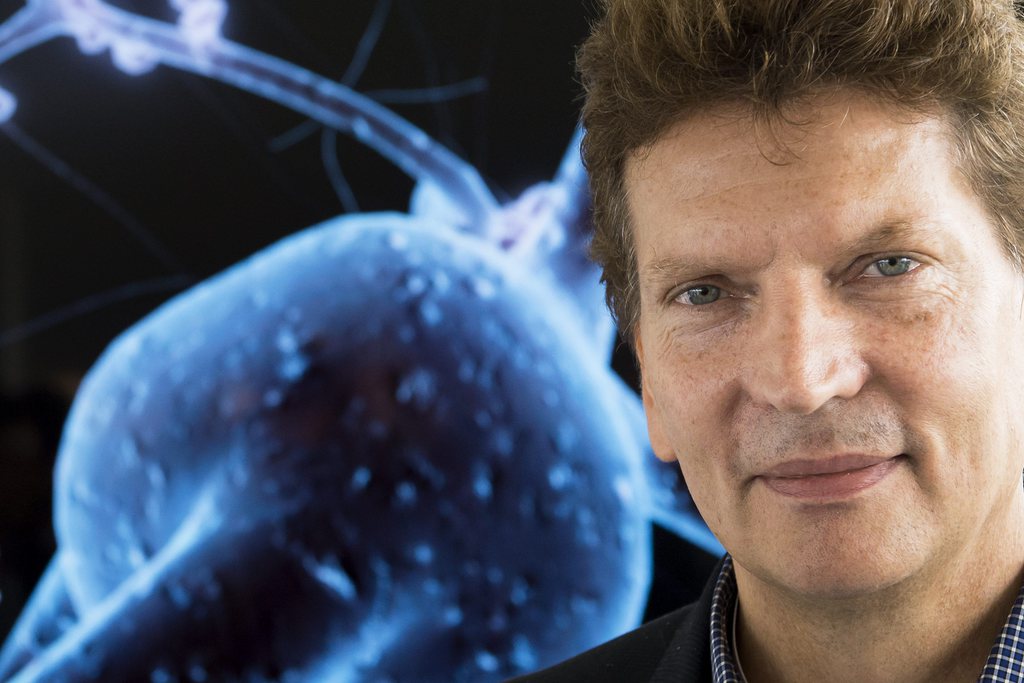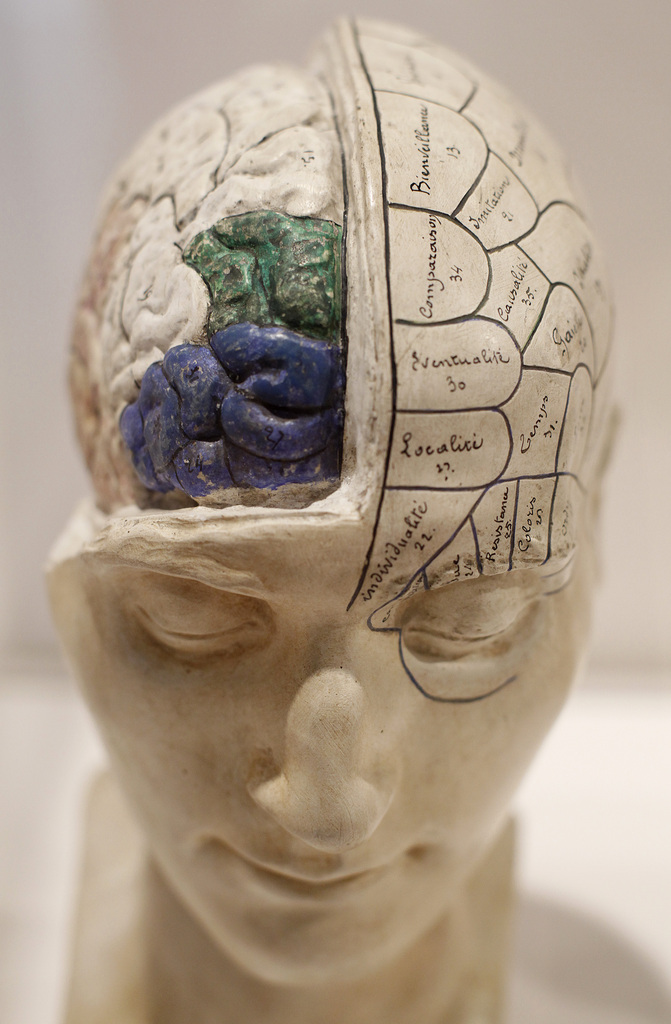Re-wiring the brain with light to overcome disorders

A cutting-edge technology that could potentially combat drug addiction could also help defeat neurological disorders such as depression and schizophrenia, according to University of Geneva researcher Christian Lüscher.
A research team led by Lüscher used optogenetics, which combines the use of genetics and light, to show how cocaine affects the brain of a mouse, but also how the addicted animal might be cured, opening the door for a treatment for heavy drug users.
If the results of the study recently published in the journal Nature can make the jump from mice to humans, optogenetics might also be considered in the long term as a toolkit that could help overcome some neurological disorders, according to Lüscher.
swissinfo.ch: Addiction is considered extremely difficult to overcome. Your study seems to provide a new tool to combat this problem.
Christian Lüscher: It is a proof of principle that addiction is a reversible disease. Unlike other brain diseases where you actually have a loss of neurons – cells die and can never come back – in an addiction situation, all that “happens” is that the circuits are remodelled through synaptic plasticityExternal link, the brain’s capacity to readapt. So if cocaine is potentiating communication between cells, its effects can also be reversed by following specific protocols so transmission becomes normal again. What we have shown is that this normalisation of synaptic transmission also normalises behaviour.
swissinfo.ch: You used a cocaine model in mice. Are the results applicable for other drugs?
C.L.: We know from many clinical studies that the experience of taking cocaine and heroin are very different, but also that they essentially induce the same disease, addiction, as defined by the compulsive use of these substances despite the negative consequences.
Neuroscience has shown over the past 15 years that this core component of addiction is mediated by an increase of mesolimbic dopamineExternal link. This means that in the reward system of the brain, these drugs converge to increase dopamine levels and this is what ultimately drives the disease.
swissinfo.ch: To engineer the reversal, you relied on optogenetics, something akin to plugging a fibre optic wire into a mouse brain. Is this applicable to humans?
C.L.: Optogenetics relies on the fact that you express a protein [how genetic instructions are used to synthesize proteins] derived from green algae in the brains of mice. You do this through genetic manipulation, where we control the types of cells that express the protein, called channelrhodopsin. In a second step, there is a blue optic fibre that comes in and when we fire a laser light through the fibre, it activates the channel in the membrane and we can control the activity of the neurons.
This requires a number of techniques, including using viruses to deliver genes that are not immediately applicable to humans. There are many open questions as to the safety of these viruses, the stability of the gene expression as well as the cell type specificity, where we cannot apply the same genetic tricks. Therefore I do not expect optogenetics to be translated to human use within the next ten years.
swissinfo.ch: Would it be possible though to apply the findings using other techniques?
C.L.: There is an approved treatment method available that allows you to stimulate inside the brain, known as deep brain stimulationExternal link (DBS). Its indications are mainly Parkinson’s disease. It’s an electrical stimulation of the brain that has been used in more than 100,000 patients worldwide for more than 25 years. It is conceivable that while it might be less precise than optogenetics, we might be able to find DBS protocols that mimic its effects in animal models. We could develop optogenetically inspired DBS as a rational way of treating drug addiction.
swissinfo.ch: Could optogenetics also be applied to brain disorders other than addiction?
C.L.: There are probably a number of brain disorders that fulfill the same criteria as addiction, i.e., that there is no neuronal death and the clinical manifestation is mostly linked to behaviour. This could be obsessive-compulsive disorders, but also depression and to some extent even schizophrenia. The studies we have undertaken on addiction may be extended, obviously in different animal models, to these other diseases to help create blueprints of how we should treat them.
Dopamine
In the brain, dopamine functions as a neurotransmitter – a signalling chemical released by nerve cells. The brain is home to several dopamine systems, one of which plays a major role in reward-motivated behaviour. Most types of reward increase the level of dopamine in the brain, and a variety of drugs increase dopamine neuronal activity. Other brain dopamine systems are involved in motor control and in controlling the release of several other important hormones.
Several neurological diseases are associated with a dysfunctional dopamine system, including Parkinson’s disease, schizophrenia, as well as attention deficit hyperactivity disorder (ADHD) and restless legs syndrome (RLS).

In compliance with the JTI standards
More: SWI swissinfo.ch certified by the Journalism Trust Initiative



You can find an overview of ongoing debates with our journalists here. Please join us!
If you want to start a conversation about a topic raised in this article or want to report factual errors, email us at english@swissinfo.ch.